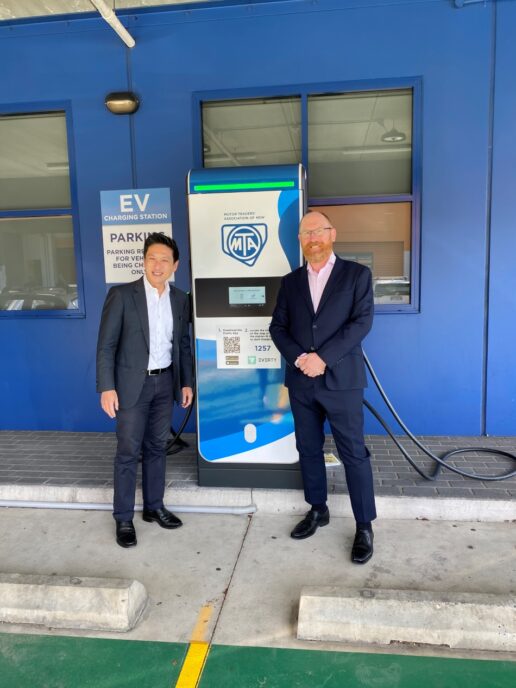
A new solar-powered EV charging station has opened for public use in Sydney.
The 60kW Wallbox charger at the Motor Traders’ Association of New South Wales (MTA NSW) head office at 214 Parramatta Road, Burwood NSW 2134, marks the latest in a series of steps to help increase EV adoption.
The solar charging station provided in a partnership which includes the National Renewable Network (NRN) offers easy access for drivers.
“We are thrilled to unveil this next generation of electric vehicle chargers which will be powered by solar energy and provide the public with a high-quality, cutting-edge charging solution,” says MTA NSW chief executive Stavros Yallouridis.
“Increasing the accessibility of charging stations and improving EV infrastructure is crucial in promoting the uptake of EVs and fuel-efficient vehicles in Australia.”
Designed by clean-energy infrastructure company Wallbox, the new charging station comprises a ‘Supernova’ 60kW charger with split-charge, allowing two vehicles to be charged at the same time. This device is composed of six 10kW modules that work together to provide maximum power while maintaining their operational independence.
The charger can add up to 100km range in under 15 minutes.
“The Supernova charger has been developed with reliability and scalability at the forefront to ensure a seamless experience for both charge-point operators and drivers,” says Wallbox Australia and New Zealand country manager Reece Davis.
More than 1000 Wallbox units have been sold in 32 countries since launching in 2022, and it has won multiple awards.
Highlighting MTA NSW’s focus on sustainability, the organisation has installed rooftop solar panels designed to offset the energy output of the chargers, the setup made possible through a partnership with the NRN whose chief executive Alan Hunter says the move is consistent with NRN’s mission to democratise access to renewable energy, including for small to medium businesses throughout Australia.
“This also serves as a proof point for future EV charging infrastructure, and we hope to see similar models being rolled out more broadly across the state.”








